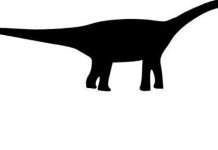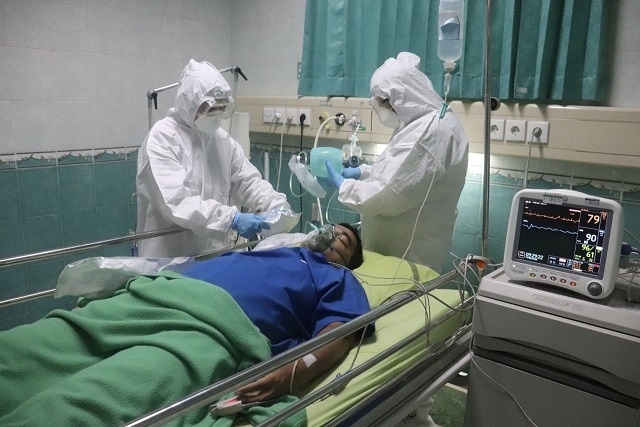The causative analysis of the current crisis in India caused by COVID-19 can be attributed to various factors like sedentary lifestyle of the population, complacency setting in due to the perception of pandemic being over, predisposition of Indian population to co-morbidities such as diabetes that results in poor prognosis, insufficiency of Vitamin D that causes severe COVID-19 symptoms and the unpreparedness of the healthcare system that was caught unawares. The present article discusses these attributes and how they led to the present-day crisis.
The entire world is grappling with the COVID-19 pandemic which has resulted in loss of millions of lives and disrupted the world economy as well as normal living to the utmost extent possible. The current situation is worse than the World War II scenario that the countries experienced almost seven decades ago and is a grim reminder of the Spanish flu that occurred almost a century ago in 1918-19. However, as much as we are blaming the virus for the unprecedented destruction coupled with the inability of various governments to tackle the situation in a responsible manner, we need to realise that the current situation being faced by the world and especially in India, is due to human behavioural pattern and we as human species should own up for the scenario being faced today for a number of reasons listed below.
First and foremost is the sedentary lifestyle (lack of physical activity)1, coupled with the unhealthy diet that results in our immune system being vulnerable to different pathogenic micro-organisms including viruses such as SARS CoV-2. There is a plethora of evidence linking balanced diet to a healthy body with an efficient immune system capable of fighting diseases. With regard to COVID-19, there has been a special emphasis to maintain the levels of different vitamins in the body, especially vitamin D. Vitamin D insufficiency is associated with increased severity of symptoms caused by COVID-192-10. Upon analysis of the situation that is being faced by India at the moment, the majority of infections that have been reported belong to the more affluent class of people who mainly stay indoors enjoying the sedentary lifestyle in an air-conditioned environment rather than people who perform physical activity in the natural environment in the presence of sunlight (helps in Vitamin D synthesis). Moreover, this category of people does not consume unhealthy junk food due to absence of excess money power and are therefore not afflicted with lifestyle diseases such as diabetes10-12, cardiovascular disease, fatty liver etc. These co-morbidities play a vital role in aggravating the symptoms caused by COVID-19. This does not mean that the less affluent do not get COVID-19. They certainly do and are as much carriers of the disease, however, they may either be asymptomatic or develop minor symptoms that may not require hospitalization.
The second aspect deals with the social and behavioural aspects of Indian culture13,14 and the associated importance given to compliance measures when it comes to community and public health outcomes. The reduction in number of cases of COVID-19 over a period of few months led to a feeling and perception that the worst of the pandemic is over. This resulted in people becoming complacent leading to less importance being given to compliance of guidelines of wearing masks in public places, maintain social distancing, use of hand sanitizers and not venturing out unnecessarily, that has caused increased virus transmission leading to mutation and assuming different variant forms that have become more infectious. This has led to higher infection rates, albeit with similar or lower mortality rates. It is worth mentioning here that it is the nature of the virus to mutate itself, especially RNA viruses, when they replicate. This replication occurs only when the virus enters the host system, in this case humans, and replicates causing more infection and spread to others. Outside the human body, the virus is “dead” and is incapable of replication and hence there is no chance of any mutation. Had we been more disciplined to practice social distancing, wearing of masks, use of sanitizers and staying at home, the virus would not have gotten the chance to infect more people and hence would not have been able to mutate, thereby leading to more infectious variants. Of particular mention here is the double mutant and the triple mutant of SARS-CoV2 that is more infectious and spreading fast compared to the original SARS-Cov2 that started infecting humans in Nov/Dec 2019. The double15 and triple mutant is currently creating a havoc in India where the country is facing almost an average of 300,000 infections per day for the past two weeks. Moreover, this natural selection by the virus is a biological phenomenon that is bound to happen as every living species tries to adapt/change (in this case mutates) for its better survival. By breaking the chain of virus transmission, the generation of new viral mutations would have been prevented, which resulted due to viral replication (for the benefit of the virus survival), albeit causing disease to human species.
In the midst of this grim scenario, the silver lining is that almost 85% of people that are getting infected by the COVID-19 are either asymptomatic or develop symptoms that are not aggravating in nature. These people are getting cured with self-quarantine and by treatment at home. Of the remaining 15%, 10% develop severe symptoms that require medical attention while the remaining 5% are those requiring critical medical care. It is these 15% of the population that requires hospitalisation of some kind or the other, thus putting a strain on the healthcare system especially in a country like India with a large population base. This 15% of the people who require urgent medical care mainly include elderly people with a weakened immune system or people with co-morbidities such as diabetes, asthma, cardiovascular disease, fatty liver disease, hypertension etc. that leads to weakening of the immune system and development of severe COVID-19 symptoms. It has also been observed (unpublished observations) that a vast majority of these 15% people had vitamin D insufficiency in their system. This suggests that by maintaining a healthy immune system, with adequate levels of vitamins, especially vitamin D and absence of co-morbidities, the number of people visiting and demanding hospital care would have reduced significantly thereby putting less strain on health resources. The Indian healthcare system14,15 was caught unawares as the senior medical officials along with the relevant policy makers and administrators never anticipated such a scenario where thousands of people would require oxygen and hospital beds all at once, thereby putting a strain on the available resources. The presence of co-morbidities worsened the situation as these people developed more severe COVID-19 symptoms and required medical attention that could only be given in a hospital setting with the requirement of appropriate amount of oxygen and ventilator support. This is something worth to ponder about going forward in order to deal with the COVID-19 disease and eventually reducing and eliminating it.
The development of COVID-19 vaccine by several companies and mass vaccination of people against the SARS-CoV2 virus will also play a significant role in the development of immunity against the virus. An important thing to mention here is that the vaccination will not prevent us from getting disease but will only help to lessen the severity of symptoms if we get infected by the virus (post vaccination). Thus, we need to adhere to the guidelines that will stop viral transmission (wearing masks in public places, maintain social distancing, use of hand sanitizers and not venturing out unnecessarily), even though we have been vaccinated, till the virus completely disappears.
This scenario of the tussle between the virus and humans, reminds us of the theory of Charles Darwin who talked about the origin of species by natural selection and survival of the fittest. Although the virus may be winning the race momentarily, there is no doubt that we, as human species, would emerge victorious in the end, by developing ways and means to fight the virus (either by vaccination and/or by our body building defence mechanisms to combat and kill the virus), leading the world back to the happy scenario where we were, before the advent of COVID-19.
***
References
- Lim MA, Pranata R. The Danger of Sedentary Lifestyle in Diabetic and Obese People During the COVID-19 Pandemic. Clinical Medicine Insights: Endocrinology and Diabetes. January 2020. doi:10.1177/1179551420964487
- Soni R., 2020. Vitamin D Insufficiency (VDI) Leads to Severe COVID-19 Symptoms. Scientific European Posted 02 June 2020. Available online at https://www.scientificeuropean.co.uk/covid-19/vitamin-d-insufficiency-vdi-leads-to-severe-covid-19-symptoms/
- Pereira M, Damascena AD, Azevedo LMG, Oliveira TA and Santana JM. Vitamin D deficiency aggravates COVID-19: systematic review and meta-analysis, Critical Reviews in Food Science and Nutrition, 2020 DOI: https://doi.org/10.1080/10408398.2020.1841090
- Rubin, R. Sorting Out Whether Vitamin D Deficiency Raises COVID-19 Risk. JAMA. 2021;325(4):329-330. DOI: https://doi.org/10.1001/jama.2020.24127
- Association of Vitamin D Deficiency and Treatment with COVID-19 Incidence. Meltzer DO, Best TJ, Zhang H, Vokes T, Arora V and Solway J. medRxiv 2020.05.08.20095893; doi: https://doi.org/10.1101/2020.05.08.20095893
- Weir EK, Thenappan T, Bhargava M, Chen Y. Does vitamin D deficiency increase the severity of COVID-19?. Clin Med (Lond). 2020;20(4):e107-e108. doi: https://doi.org/10.7861/clinmed.2020-0301
- Carpagnano, G.E., Di Lecce, V., Quaranta, V.N. et al. Vitamin D deficiency as a predictor of poor prognosis in patients with acute respiratory failure due to COVID-19. J Endocrinol Invest 44, 765–771 (2021). https://doi.org/10.1007/s40618-020-01370-x.
- Chakhtoura M, Napoli N, El Hajj Fuleihan G. Commentary: myths and facts on vitamin D amidst the COVID-19 pandemic. Metabolism 2020;109:154276. DOI: https://doi.org/10.1016/j.metabol.2020.154276
- G, R.; Gupta, A. Vitamin D Deficiency in India: Prevalence, Causalities and Interventions. Nutrients 2014, 6, 729-775. https://doi.org/10.3390/nu6020729.
- Katz J, Yue S and Xue W. Increased risk for COVID-19 in patients with vitamin D deficiency. Nutrition, Volume 84, 2021, 111106, ISSN 0899-9007. DOI: https://doi.org/10.1016/j.nut.2020.111106.
- Jayawardena, R., Ranasinghe, P., Byrne, N.M. et al. Prevalence and trends of the diabetes epidemic in South Asia: a systematic review and meta-analysis. BMC Public Health 12, 380 (2012). https://doi.org/10.1186/1471-2458-12-380.
- Mohan V, Sandeep S, Deepa R, Shah B, Varghese C. Epidemiology of type 2 diabetes: Indian scenario. Indian J Med Res. 2007 Mar;125(3):217-30. PMID: 17496352. https://pubmed.ncbi.nlm.nih.gov/17496352/
- Bavel, J.J.V., Baicker, K., Boggio, P.S. et al. Using social and behavioural science to support COVID-19 pandemic response. Nat Hum Behav 4, 460–471 (2020). https://doi.org/10.1038/s41562-020-0884-z
- The pandemic and the challenge of behaviour change Available online at https://www.thehindu.com/opinion/op-ed/the-pandemic-and-the-challenge-of-behaviour-change/article31596370.ece
- Anjana, R.M., Pradeepa, R., Deepa, M. et al. Prevalence of diabetes and prediabetes (impaired fasting glucose and/or impaired glucose tolerance) in urban and rural India: Phase I results of the Indian Council of Medical Research–INdia DIABetes (ICMR–INDIAB) study. Diabetologia 54, 3022–3027 (2011). DOI: https://doi.org/10.1007/s00125-011-2291-5
- Kumar V, Singh J, Hasnain SE and Sundar D. Possible link between higher transmissibility of B.1.617 and B.1.1.7 variants of SARS-CoV-2 and increased structural stability of its spike protein and hACE2 affinity. bioExiv 2021.04.29.441933. DOI: https://doi.org/10.1101/2021.04.29.441933
- Niti Ayog 2020. Mitigation & Management of COVID-19. Available online at https://niti.gov.in/sites/default/files/2020-11/Report-on-Mitigation-and-Management-of-COVID19.pdf
- Gauttam P., Patel N., et al 2021. Public Health Policy of India and COVID-19: Diagnosis and Prognosis of the Combating Response. Sustainability 2021, 13(6), 3415; DOI: https://doi.org/10.3390/su13063415
***




































